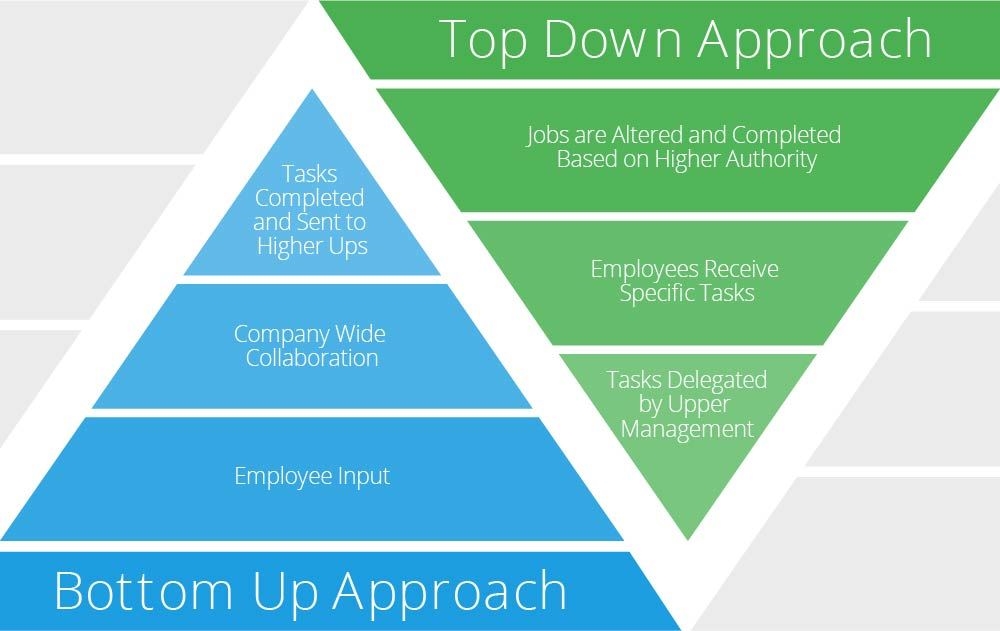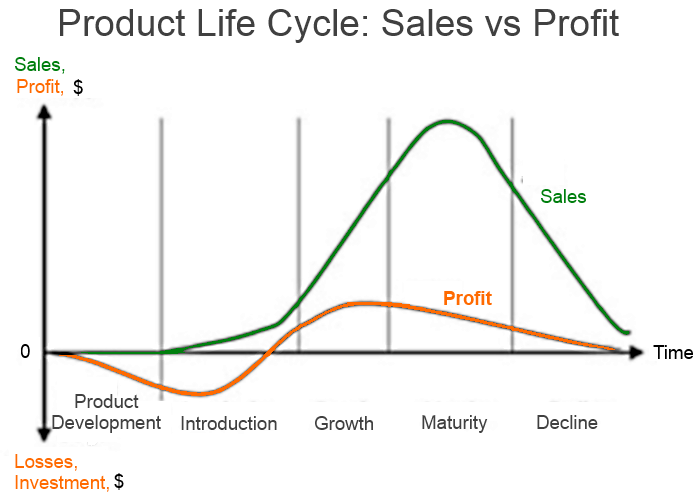
Your management styles can kill your business; dragging down efforts to grow the business and increase profits. In today’s post, let’s discuss some aspects of management styles that impact profitability.
Management styles
Management styles used across various departments and functional areas, along with corporate culture, are an important part of your overall strategy and have an enormous impact on your market performance. Management style accounts for 70% of employee engagement and employee engagement leads to:
- lower absenteeism
- higher employee retention
- increased sales
- better quality
- improved customer service
- greater productivity
- higher profits
Yet, management styles involve a balancing act between control and autonomy, something many businesses find challenging. And, this challenge, often based on arcane management philosophy or prior experiences, generates a sizable opportunity cost and may even sink your business, as you see from the list of benefits from employee engagement listed above.
Management styles and autonomy
Management styles based on autonomy are scary for many firms, especially those rooted in a top-down mentality developed over generations.
 Image courtesy of SmartSheet
Image courtesy of SmartSheet
Looking at most firms, you’ll find an unwieldy bureaucracy where management does the thinking and everyone else follows obediently. Top-down management, the most common management style, ensures control, but what do you give up with this management style based on military practice?
A lot, especially among younger workers who value involvement in setting the mission and goals of the organization. A top-down management style generates increased turnover, lower efforts, and increased efforts focused on bad behaviors, such as stealing and engaging in personal activities at work. The problem grows when upper management fails to generate appropriate strategies to guide business success. Without insights from employees at all levels within the company, the business struggles to stay relevant to customers or identify problems before they become large enough to cause a serious impact on profits.
From a marketing perspective, a top-down approach means communication from customers and other front-line functions, such as products, goes nowhere when these front-line employees have no incentive to work to fix problems they see. They have no incentive to go the extra mile to ensure customer satisfaction and don’t see the bigger picture beyond their particular functional area.
Innovation
One of the biggest casualties of a top-down approach is innovation.
Sure, innovation happens in a militaristic, top-down organization, but it’s slow, poorly managed, and usually results in incremental improvements rather than disruptive, highly profitable new products. According to Sloan:
… innovation requires a high level of work autonomy for their employees. This encourages curiosity, enables independent thinking, and provides an environment in which employees can experiment and test new problem-solving approaches with minimal fear of failure.
At least according to a new book by Salim Ismail: Exponential Organizations: Why new organizations are ten times better, faster, and cheaper than yours (and what to do about it)* using the term “permissionless innovation”.
And, innovation is critical for business success. According to Sridhar Balasubramanian, Associate Dean of the UNC Keenan-Flagler MBA program, the impact of innovation on business performance is enormous:
Only companies that constantly challenge what they do, challenge themselves to come up with new and different ways of doing things, and also constantly improve on things that they already do will survive in this new globally competitive environment. That’s very, very important.
The mantra of the ’80s was merge to succeed, in the 2000’s it was shrink to succeed, in 2015, it’s innovate to succeed. Supporting this, the most innovative small businesses on the BCG list generated $ 30 billion, up 170% since their first survey in 2005 (in constant dollars).
Critical management styles for innovation
In addition to having a bottom-up approach to innovation management, successful innovators share other elements that define their management styles. We mention the most common shared elements below
Accepting failure
According to Ismail, cultures and management styles that not only accept failure but reward failure when it results in learning dominate among innovative organizations.
Up to 75% of new products fail. The trick is to learn from failures so you don’t do that again.
Most top-down management styles reward failure with career-ending consequences — firing, demoting, or relegating failing executives to dead-end jobs. Sure, if you never try anything new, you’ll never fail and doing what everyone else does, doesn’t expose you to consequences when those actions fail. Yet, such efforts to avoid risks have negative consequences in the ever-changing world that rewards nimbleness. The product lifecycle emphasizes that every product is born and ultimately dies. If your product dies before you innovate a new product, your business fails.
 Image courtesy of Comindwork
Image courtesy of Comindwork
Hence, innovative organizations reward learning; recognizing that the competitor who learns fastest, wins the most. And, failure is the fastest and surest way to learn.
Lean management styles even coined the term “fail fast” to reflect the notion that markets are the best arbiters of success, so getting products to market fast and letting them succeed or fail there, is preferable to lengthy internal product development processes that often (remember, 75% of new products fail) result in ultimate failure in the marketplace after consuming millions of dollars to develop and market the product. For instance, Microsoft invested $ 500 million to market its failed Windows Vista operating system, despite major problems with the product itself. The product failure cost the company development costs but, more importantly, cost them their reputation and recovering took years. Had they used the concept of fail fast, they would have involved customers earlier in the process and discovered the problems before a full product launch.
In contrast, Proctor and Gamble, itself no stranger to failure (see Febreze Sensestories), awards the Heroic Failure award each year to honor the employee or team for creating a failure that contributed valuable lessons to help avoid future failure.
Ismail has this to say about the importance of a management style, in this case, framed as corporate culture, that accepts failure:
A corporate culture that accepts failure benefits from diminished internal politics and much less in the way of pointing fingers and ‘blame games’ thanks to trust, transparency, and openness.
Openness in innovation
Everybody has good ideas sometimes.
When management styles accept openness that encourages everyone, including customers, to suggest improvements or entirely new products — products that likely contribute significant profit to a business, the business profits.
Openness is a key element in a management style supporting innovation. In an HBR article, Joe Violette claims:
leadership’s role is also “to provide a work environment of openness built on trust where every member of the team feels free to express their views/opinions without fear of ridicule or reprisal.
Existing top-down management styles lack the openness necessary to spur innovation; instead many are mired in institutional politics, sunk cost arguments, incremental thinking, and a “not invented here” bias.
Intrapreneurship
Some businesses formalize internal innovation by instituting intrapreneurship programs. Arguably the most famous product developed through intrapreneurship is the Post-It Notes product produced by 3M. Anyone who studied management likely encountered the circuitous story behind this incredibly successful product.
The glue used in Post-It Notes was rejected within the company due to its low adhesion. But, one of their employees recognized this characteristic was valuable for a use-case where temporary adhesion was desired. That employee, Art Fry, recognized the potential of this low-adhesion glue as a means to mark weekly selections in his hymnal without damaging the book. Using 3M’s “sanctioned bootlegging” program, 3M patented and made millions off this little invention.
The MIT Entrepreneurship program uses a lean startup strategy called the 5X5X5X5 method that’s based on one used at Adobe. In this method:
- 5 corporate teams work on an innovation
- each team contains 5 members
- teams spend 5 weeks developing their idea
- and have a budget of $ 5000
This process produces an MVP (minimum viable product) — a super-fast, data-driven experimental approach to creating products that solve consumer problems and likely produce success. Learn more about Lean Startups and MVPs in The Lean Startup: How Today’s Entrepreneurs Use Continuous Innovation to Create Radically Successful Businesses
Customers as sources of innovation
And, don’t forget consumers.
Social media and other data sources are filled with unmet consumer needs calling out for a solution from companies with enough forward-thinking and the right management style to produce products to meet these needs. And, the right management styles encourage engagement by these consumers to share ideas, problems, and unmet needs with the company.
Some firms truly harness the power of consumers by creating prizes for individuals or teams to solve consumer problems.
All these fantastic innovation strategies are impossible with top-down management styles.
Loose management style
Increasingly, firms use management styles involving a diverse, interdisciplinary team or independent agents brought together to solve problems rather than managing within the classic functional silos with employees who are ordered to produce innovations.
Current management conditions that favor innovation require autonomy between the organization and the individual, be they employee or customer, that doesn’t exist in the classic management style where employees are envisioned as beholding to the largess of the corporation and expected to simply do their work.
Instead, the innovative manager relies on his/ her team members, recognizing they’re experts in areas over which he/ she might have little expertise. This precludes a top-down management style implying the manager knows exactly what must be done to achieve success and merely orders subordinates to perform predefined tasks.
A great example of this comes from Johnsonville Sausage when the owner, Ralph Stayer, let his employees lead. Disappointed by his company’s performance against a growing list of competitors, Stayer chose the radical approach of turning over control to his employees, recognizing they were the experts in their work area. He shifted so that line workers read and answered customer letters, they solved problems with their product reported by retailers and others in the supply chain, they handled internal staff issues, developed new products, and even developed new supply chains, such as an online e-commerce business. Stayer offered generous profit sharing to reward employees for their extra efforts and encourage better performance. He acted as a cheerleader for their efforts, as well as a linebacker to remove obstacles from impeding their progress. His changes resulted in huge success for his struggling company, now a leader in their market and involved in partnerships to produce private-label brands for other companies.
Self-managed teams now must not only achieve cohesion, but determine the best course of action to achieve organizational goals, set metrics to evaluate their own performance, and self-organize, which requires individuals whose goals align with that of the organization and have an emotional investment in the organization’s success, not simply a need to comply with orders. They put their hearts into their work, not just their brains. They’re competitive and committed to success. They set the bar high, knowing that it’s OK to miss some goals, as long as they’re challenged.
Conclusion
I know when you started reading this post, you questioned how management styles impact marketing and, thus, why this post belonged on this blog. I hope you have a better understanding of the intersection between marketing and management (the reason I have a minor in management within my Ph.D.). You likely gained an appreciation for management styles that differ from the ones you likely saw through much of your life. Maybe you’ll decide to give up some control and let your employees lead, something especially challenging for an entrepreneur to manage as his/ her venture grows and hires more employees.
If this post generated questions or you wish to share your own experiences, please add your thoughts in the comments below. Also, if you have suggestions for future posts, list those ideas as well.
Business & Finance Articles on Business 2 Community
(22)







